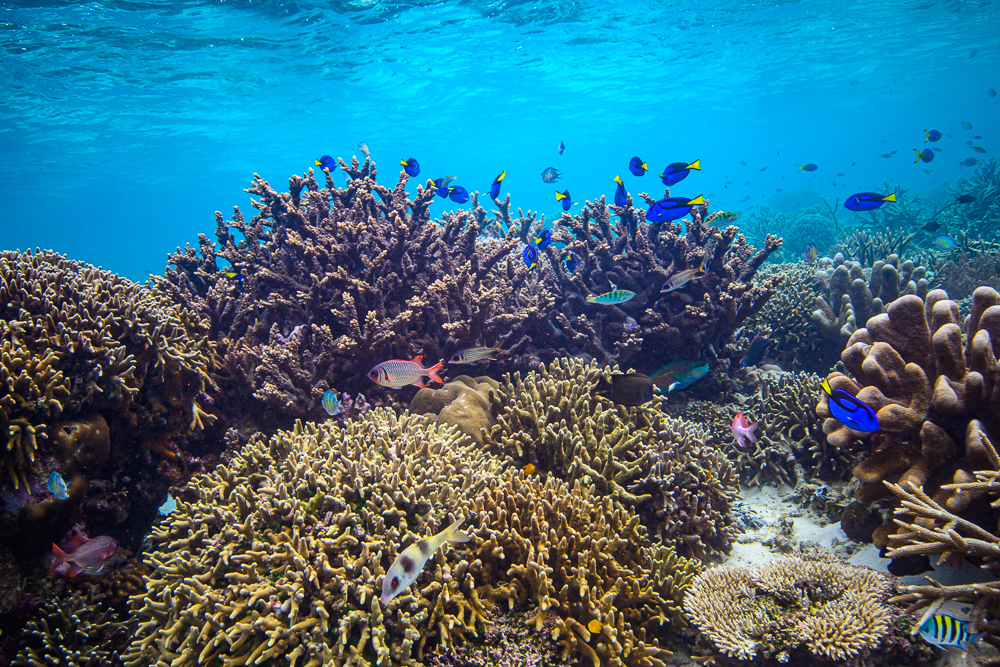
I’ve seen Blue Tang in the wild on numerous occasions. But they get harder and harder to come by. Based in Bali, Indonesia, I often met a couple of adults or juveniles around here and there. But rarely found a healthy adult population. Like many people, I thought the aquarium industry was responsible for its disappearance. And to be honest, it is responsible for most of it, but not only.
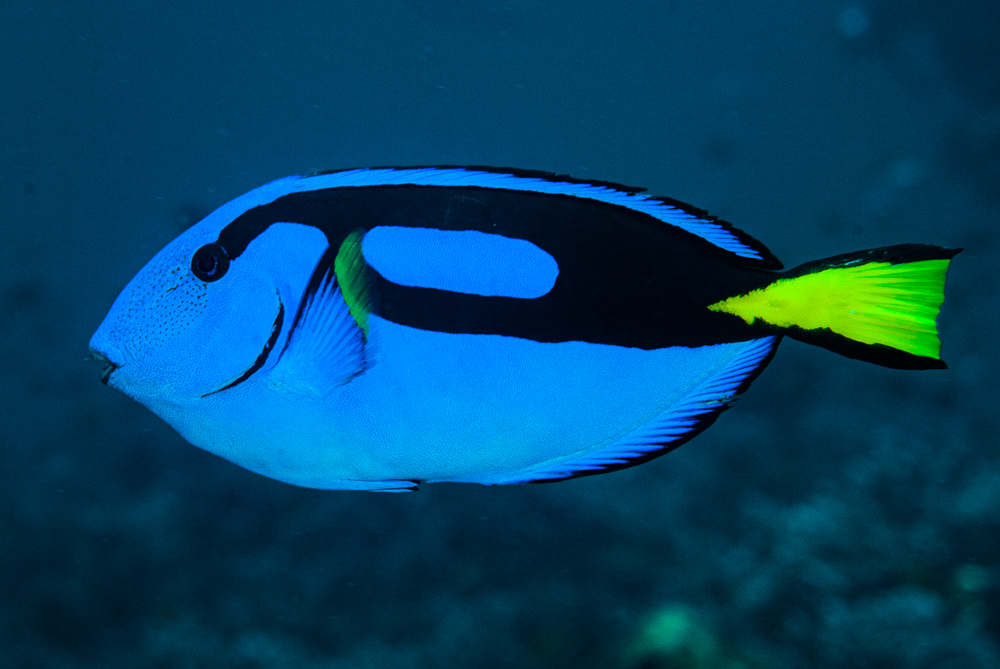
Why the ‘Dumb Fish’?
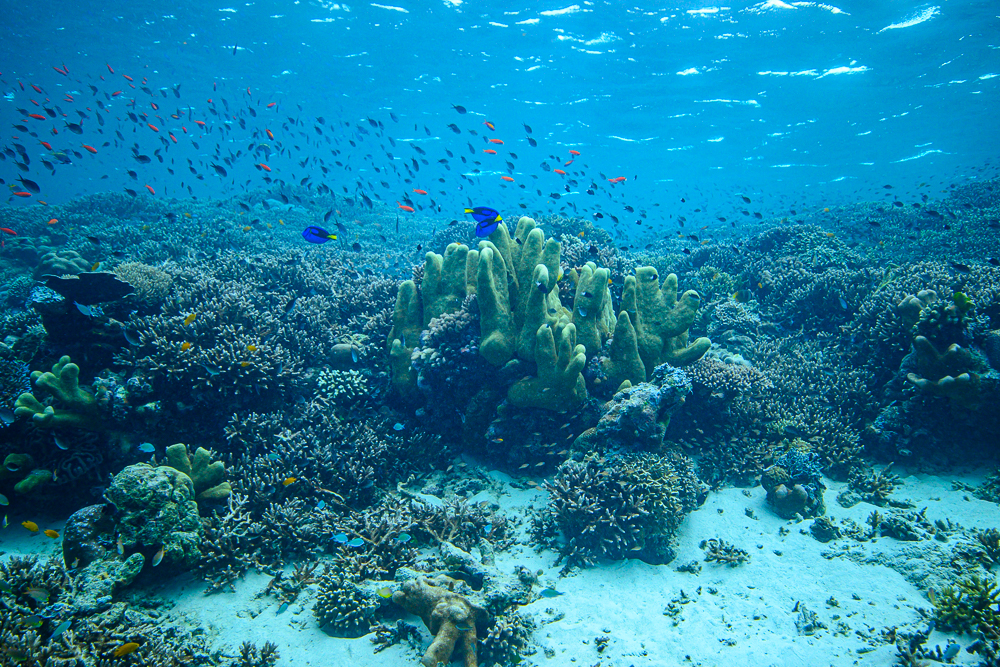
I once met some native fishermen and asked what was the common name for this fish, and their answer was ‘Ikan Bodoh’ or ‘Dumb Fish’. And I was told that their hiding habit made them easy prey for fishermen, that you just had to grab them within the thick, wide branching corals where they usually take refuge. They also offered this advice: “Just being careful to handle the caudal peduncle scalpel carefully. They are just free hand-size meals!”
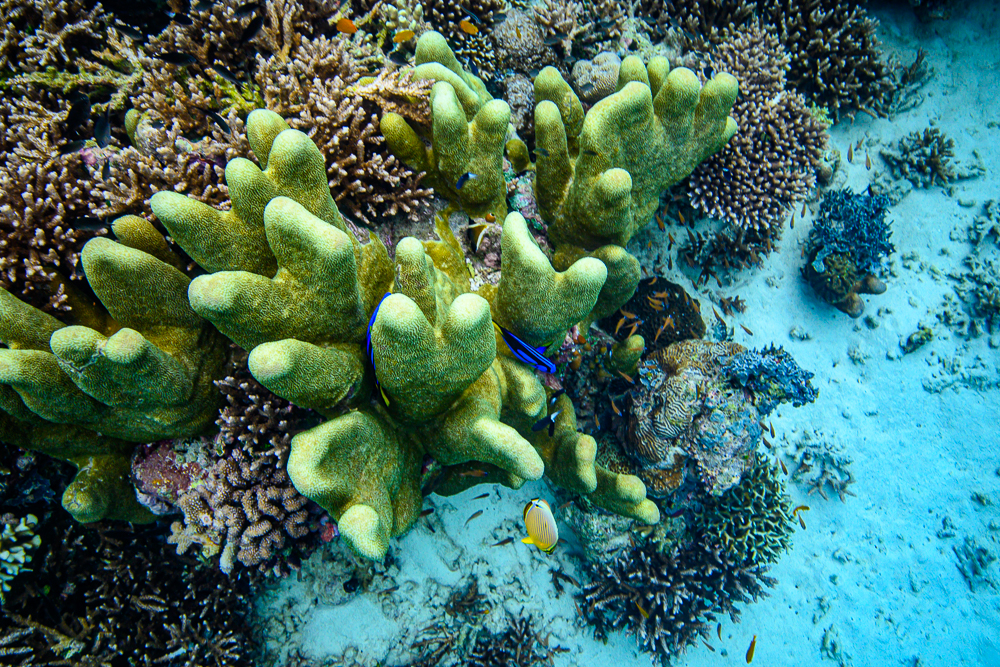
Isopora palifera, a prime real estate
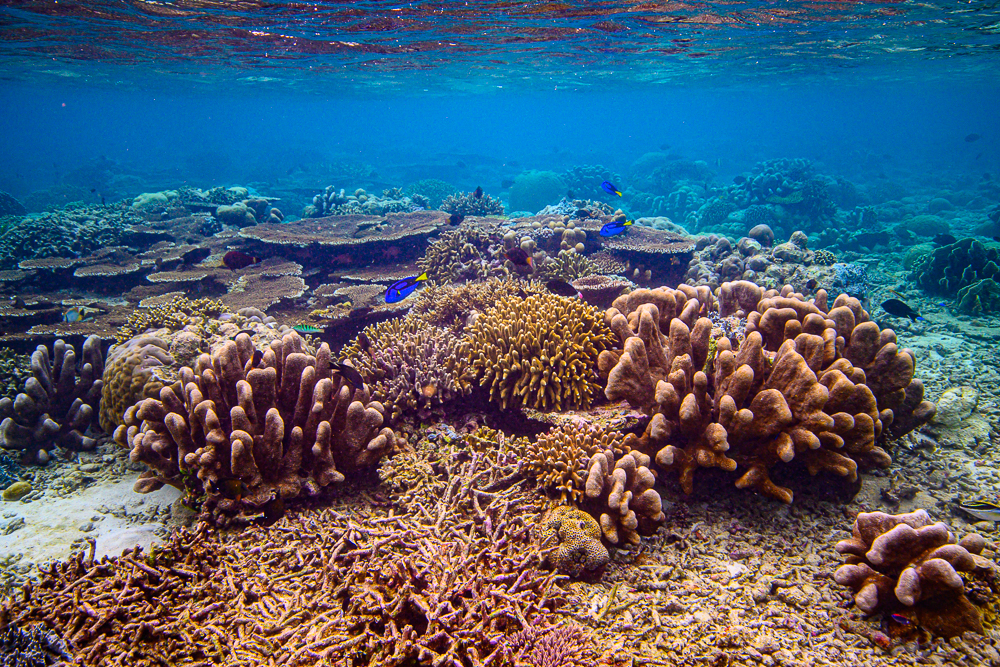
In that particular place, a few adults would choose Acropora florida, or Acropora robusta in the very shallow part of the reef. But any colony head of Isopora palifera would host at least one pair of Blue Tangs that wouldn’t wander too far off their spacious ‘mansion’.
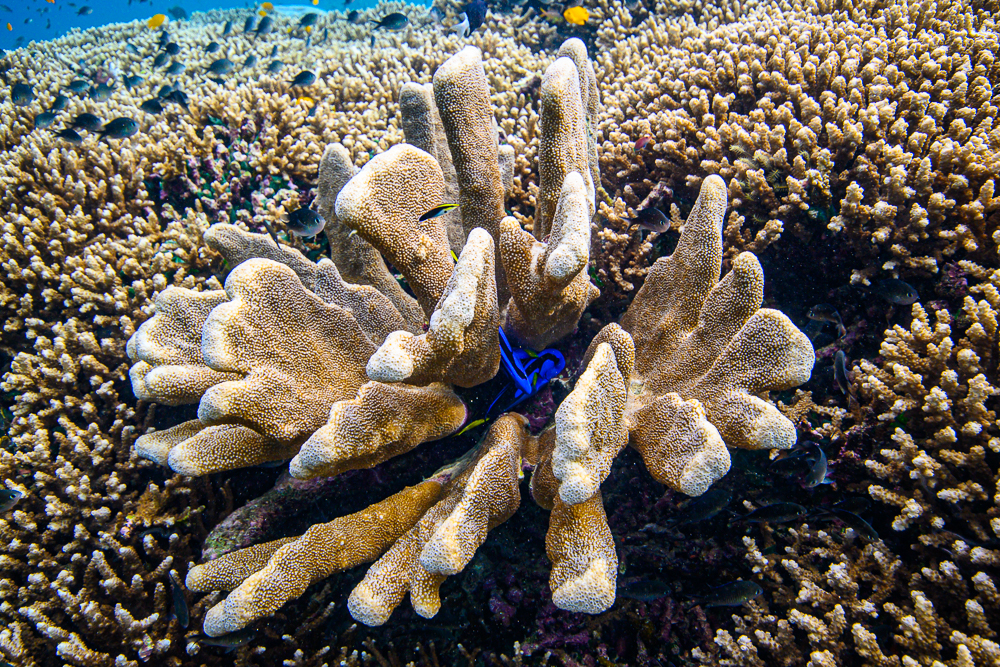
A very skittish fish
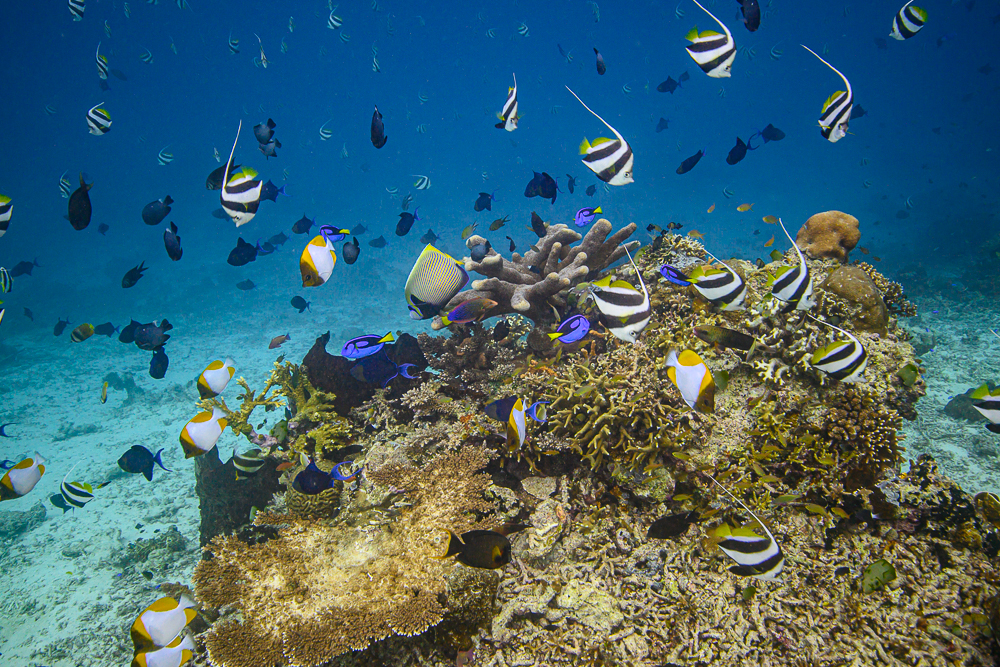
It was impossible to approach them closer than about five feet away, even moving very slowly, holding my breath, shifting sideways, snorkeling… I tried everything to get a close shot of them right above the corals. But they were too skittish and retreated within the corals at the most approach of anything big. Even a turtle would get them to retreat.
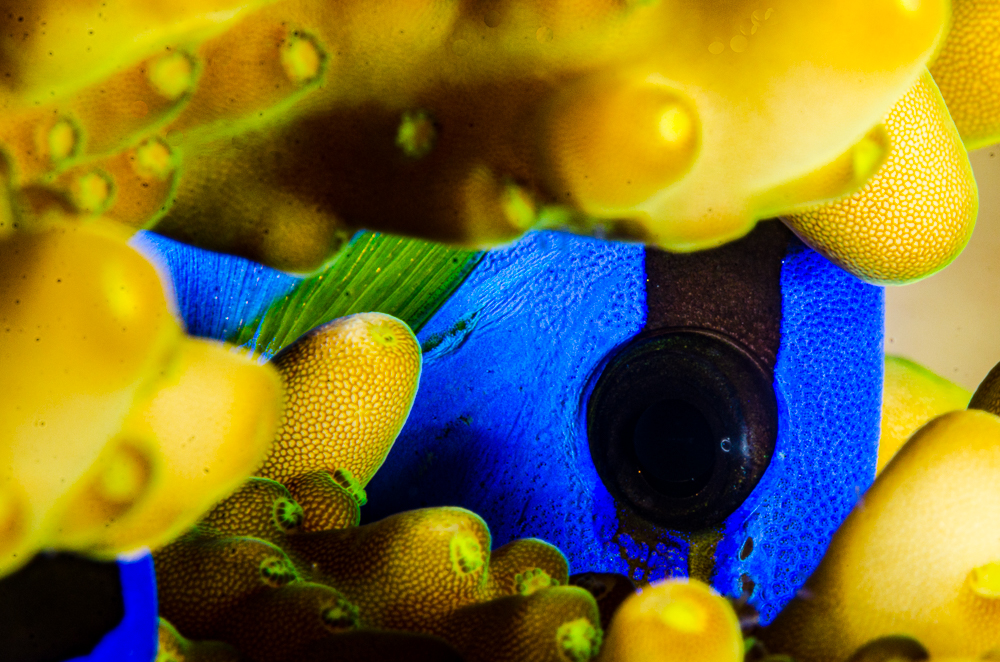
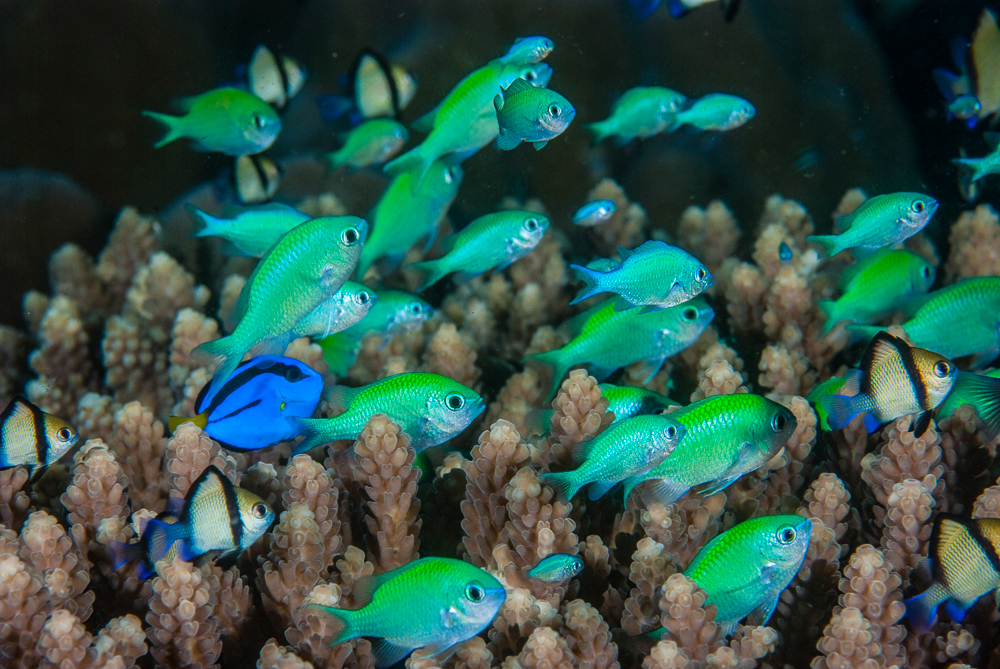
Juveniles just do the same thing but within more compact branching Acropora spp. and Isopora bruggemani.
The breeding of this species for the marine ornamental industry, unfortunately, is not yet mastered but should be soon, as many people have already succeeded in breeding a few specimens. Mass producing them is still eluding the major breeders, unfortunately, while the demand is still very high.
From my view as a diver with many years in the marine livestock trade, I feel strongly that a solution needs to be found to reduce the collection of this disappearing species.
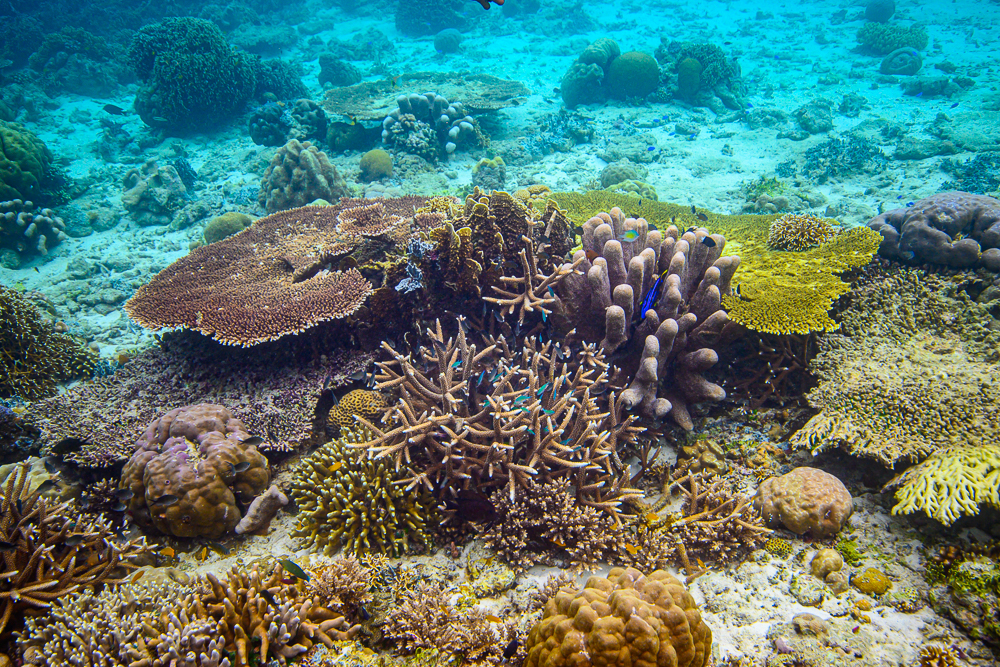





IMPORTANT YOU MENTIONED HOW DANGEROUS TOUCHING CAN BE. CHAP CLEANING HIS CLOUDY TANK LANDED IN HOSPITAL. 65 WITH HEART CONDITION AND BLUE/PURPLEY GREATLY SWOLLEN MIDDLE FINGER. STAFF WORRIED MIGHT HAVE HEART ATTACK. POISON CONTROL CALLED ME COME TO HOSPITAL TO HELP AS MARINE BIOLOGIST AT COUNTY HEALTH DEPT. IN WATER POLLUTION CONTROL. AFTER QUESTIONING ESTABLISHED BLUE TANG IN TANK ONLY FISH CAPABLE. TAKE-AWAY-NO UNPROTECTED HANDS IN CLOUDY TANK WITH BLUE TANG.
ALSO MEDICAL FOLKS NOT SCHOOLED, ASK A FELLOW “TANKER”.